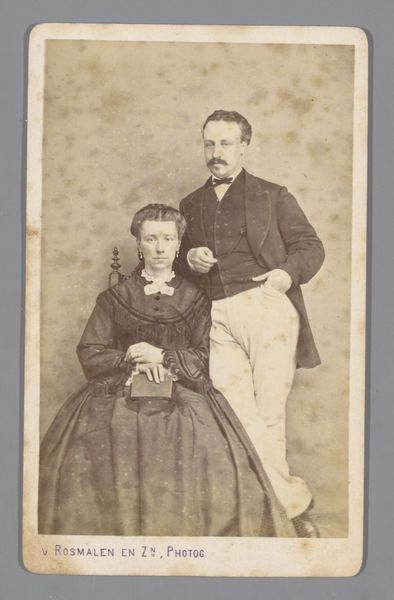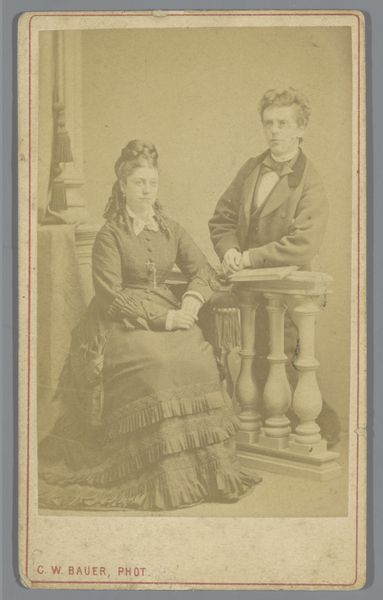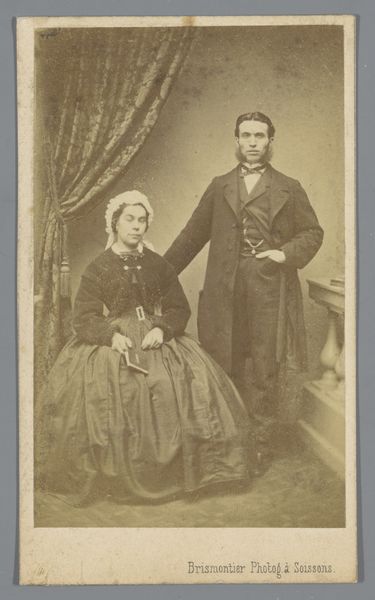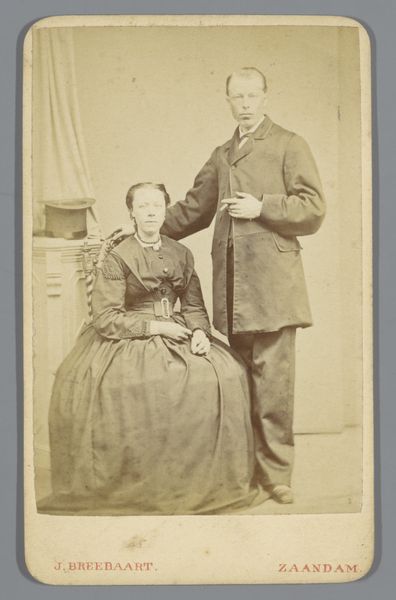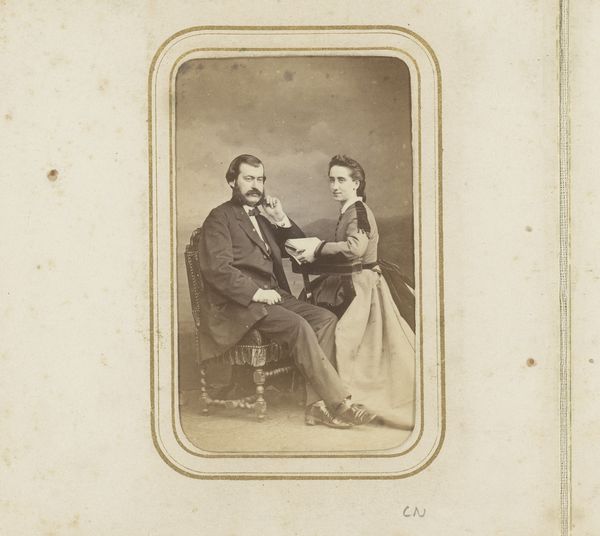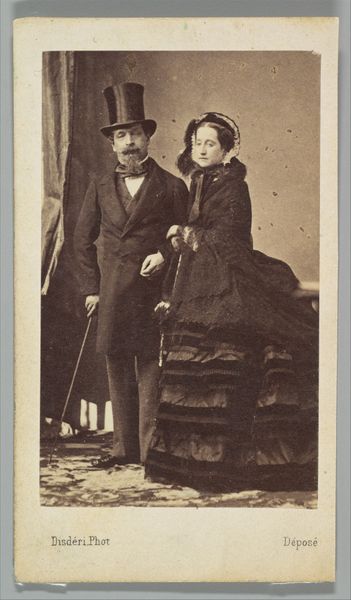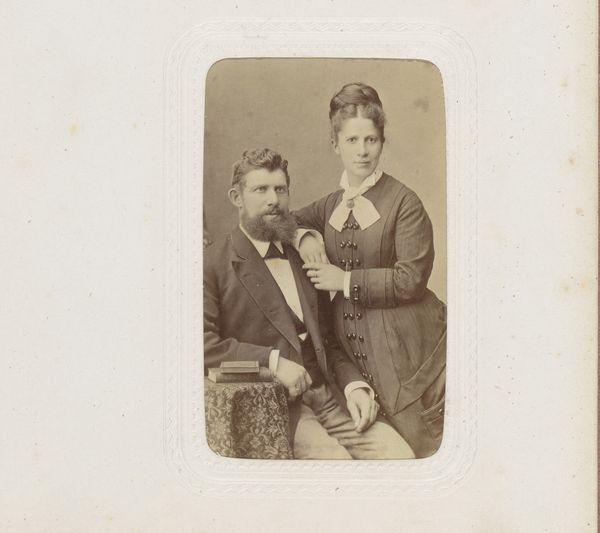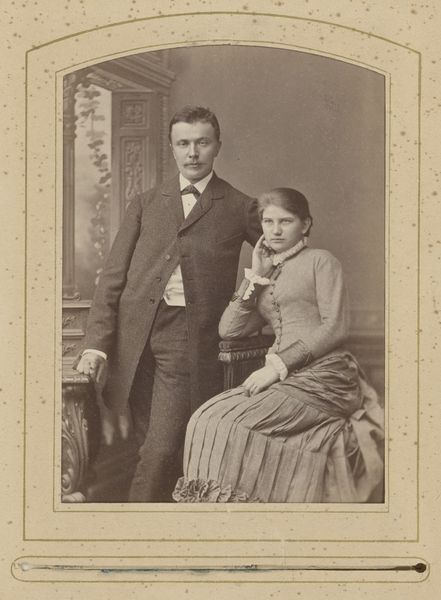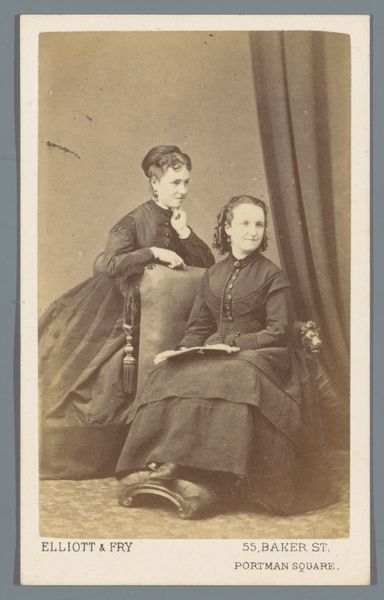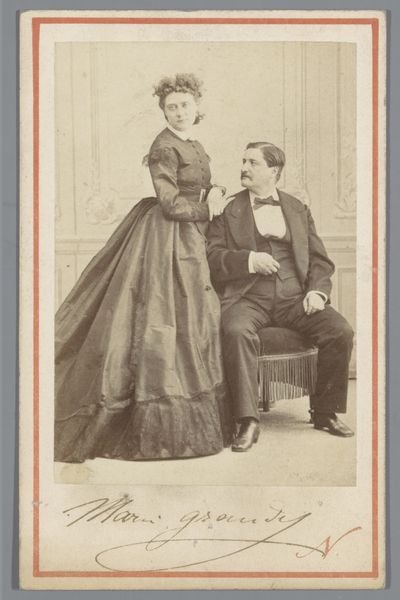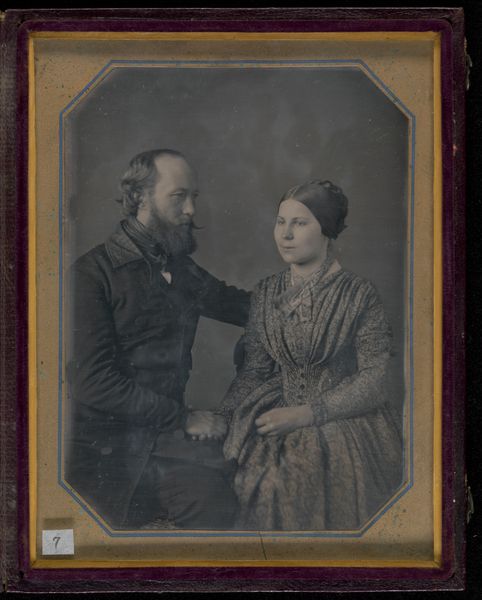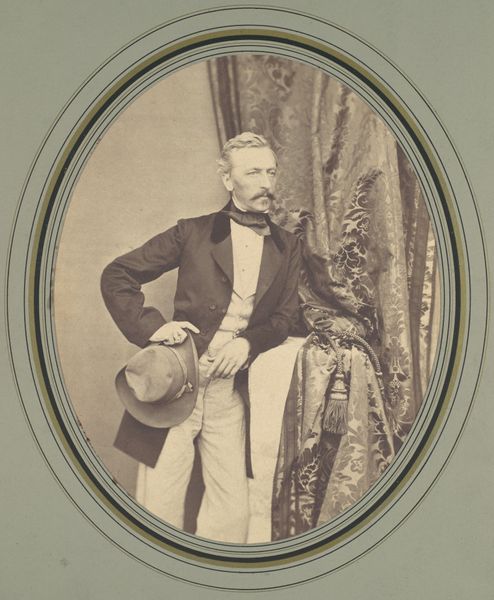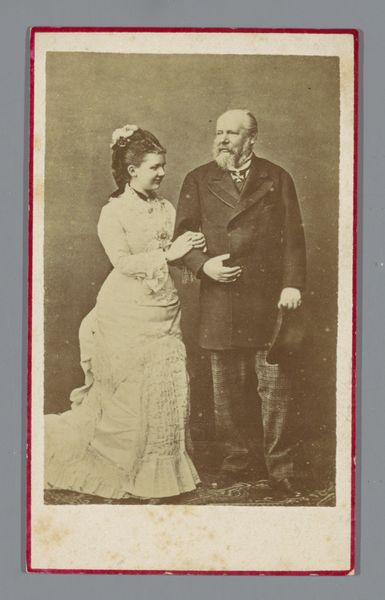
Dimensions: image/sheet: 8.8 × 5.5 cm (3 7/16 × 2 3/16 in.) mount: 10.1 × 6.2 cm (4 × 2 7/16 in.)
Copyright: National Gallery of Art: CC0 1.0
This portrait of a man and woman was made by Mrs. R. Geer sometime in the mid-19th century, using the wet collodion process, a popular photographic technique at the time. The process involved coating a glass plate with light-sensitive chemicals, exposing it in a camera, and then developing it immediately. The resulting image, a collodion negative, was then used to make prints on paper. The sepia tones we see here are characteristic of this process. Photography in this era wasn't just about capturing a likeness, but about participating in a rapidly changing industrial landscape. The rise of photography coincided with the growth of mass production and consumer culture, making portraits more accessible to a wider segment of the population. It also provided work for many women. The labor involved in creating these images, from the preparation of chemicals to the printing of photographs, often goes unnoticed. By focusing on the material and the making, we can appreciate the cultural and social significance of photography beyond its aesthetic qualities.
Comments
No comments
Be the first to comment and join the conversation on the ultimate creative platform.
